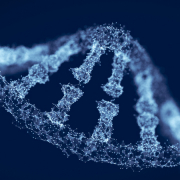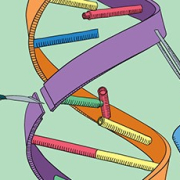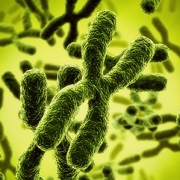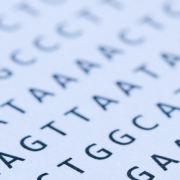New genetic condition to be included in UK newborn screening
The rare condition tyrosinaemia type 1 may soon be included in national newborn blood spot screening
The UK National Screening Committee (UK NSC) has recommended that a genetic condition called tyrosinaemia type 1 be added to all newborn blood spot screening programmes across England, Scotland, Wales and Northern Ireland.
Tyrosinaemia
Tyrosinaemia is a rare metabolic disorder in which the body is unable to break down the amino acid tyrosine, which is a component of the proteins in our bodies and our food.
There are three types of tyrosinaemia, of which type 1 is the least rare. Each type is caused by the lack of a functional copy of a different key enzyme in the pathway by which tyrosine is broken down, and all are inherited in a recessive pattern.
Liver problems are especially common in type 1 tyrosinaemia, because the enzyme that is missing is primarily expressed in liver cells. As a result of the missing enzyme, the tyrosine is partially but not completely broken down. The resulting molecules, including succinylacetate, accumulate in cells and cause toxicity.
This damage in turn can result in liver failure, increased risk of liver cancer, kidney dysfunction, learning difficulties and neurological crises, with symptoms including limb pain, vomiting and seizures.
These symptoms can be eased, or avoided altogether, with a special diet that reduces the intake of the amino acids tyrosine and phenylalanine, together with a drug called nitisinone, which prevents the formation of toxic intermediaries. Before this drug was available, liver transplant was the only option for many patients.
Newborn blood spot tests
The NHS newborn blood spot screening programme was introduced in the late 1950s as a test for phenylketonuria (PKU). The absorbent piece of paper onto which the four drops of blood are collected – the Guthrie card, as it became known – was introduced in the 1970s, and as medicine and technology have progressed more conditions have been added to the test. All are rare but serious if left untreated.
Commonly referred to as the heel prick test, the screening usually takes place five days after a baby is born. Nine conditions are currently screened for in England, Scotland and Wales, and five in Northern Ireland, of which six are inherited metabolic conditions like PKU and tyrosinaemia. Parents do not have to have their newborns tested, but it is highly recommended that they do.
All of the conditions screened for via the newborn blood spot test are genetic. The test itself looks for biological markers in the blood that could indicate the presence of the condition, rather than at the baby’s genetic code (for tyrosinaemia, the test would look for unusual levels of succinylacetate). Because of this, a positive result would not necessarily be diagnostic: it may require further tests, possibly genetic tests, for confirmation.
Children with type 1 tyrosinaemia usually show symptoms at around six months old, by which time liver damage has already occurred. The UK NSC has stated that newborn screening would make it possible for more children to be diagnosed before they start showing symptoms, allowing them to begin the necessary diet and treatment before their organs are damaged. “The avoidance of liver transplantation is a very important outcome for babies and their families,” said Chair of the UK NSC Professor Sir Mike Richards.









